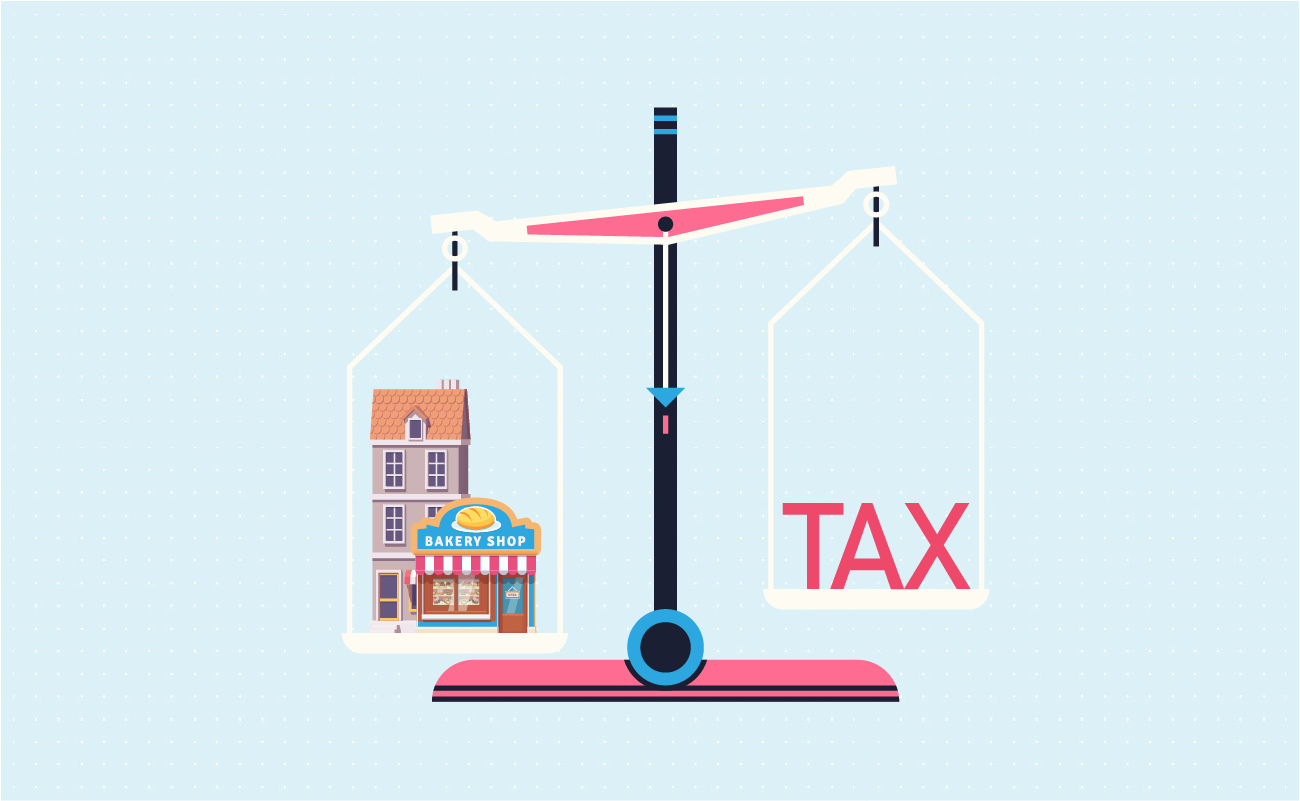 1031 Exchange Calculator
1031 Exchange CalculatorUse this calculator to quickly figure out how much tax you can defer by performing a 1031 exchange rather than making a taxable property sale.
Use this calculator to determine the 45 & 180 day 1031 tax exchange deadlines.
Guide published by Jose Abuyuan on September 1, 2020

Planning around taxes can cut their total impact on your financial decisions. One way to do this with real estate is through the 1031 exchange, which can allow you to defer capital gains taxes. Although not a “get out of tax free” card, these exchanges can reduce the impact that taxation has on your profits.
Section 1031 of the U.S. Tax Code lets investors defer capital gains taxes on real estate if they reinvested their proceeds on another property. The taxes would instead be due when they sell the new property in the future. There is no limit to how many times you can do the exchange. As long as you can find a property within that span of time, you can reinvest and defer your taxes.
The 1031 exchange is a crucial tool in the real estate investor’s arsenal. Thanks to this, many investors choose to play the long game with their taxes. They can delay capital gains taxes indefinitely by exchanging properties often. Taxes would only be due as part of their exit strategy, which can be several years into the future.
Like other tax-deferred investments, 1031 exchanges put time on the investor’s side. Taxes on real property might be lower tomorrow than they are today.
Capital gains taxes are charged to the profits investors make from selling appreciated assets. The Internal Revenue Service (IRS) employs two types of capital gains tax. Assets that are held for only a few months will be charged with short-term capital gains taxes. Assets held for longer than a year, meanwhile, will be charged with long-term capital gains. Planning around capital gains taxes is a critical part of every investment.
The following table outlines the 2020 federal income tax rates for short-term capital gains:
| Rate | Single | Married filing Jointly | Head of Household | Married filing Separate |
|---|---|---|---|---|
| 10.00% | $0 - $9,875 | $0 - $19,750 | $0 - $14,100 | $0 - $9,875 |
| 12.00% | $9,876 - $40,125 | $19,751 - $80,250 | $14,101 - $53,700 | $9,876 - $40,125 |
| 22.00% | $40,126 - $85,525 | $80,251 - $171,050 | $53,701 - $85,500 | $40,126 - $85,525 |
| 24.00% | $85,526 - $163,300 | $171,051 - $326,600 | $85,501 - $163,300 | $85,526 - $163,300 |
| 32.00% | $163,301 - $207,350 | $326,601 - $414,700 | $163,301 - $207,350 | $163,301 - $207,350 |
| 35.00% | $207,351 - $518,400 | $414,701 - $622,050 | $207,351 - $518,400 | $207,351 - $311,025 |
| 37.00% | $518,401 and up | $622,051 and up | $518,401 and up | $311,026 and up |
Long-term capital gains income tax rates, meanwhile, are much lower:
| Rate | Single | Married filing Jointly | Head of Household | Married filing Separate |
|---|---|---|---|---|
| 0.00% | $0 – $40,000 | $0 - $80,000 | $0 to $53,600 | $0 to $40,000 |
| 15.00% | $40,001 – $441,451 | $80,001 - $496,600 | $53,601 to $469,050 | $40,001 to $248,300 |
| 20.00% | $441,451 and up | $496,601 and up | $469,051 and up | $248,301 and up |
You also need to pay state capital gains taxes, which can vary immensely across the country.
The capital gains taxes on real property are governed by a few more rules. You could avoid a large part of your tax burdens through the Section 121 exclusion. You can exclude up to $250,000 worth of taxes for single filers and $500,000 for those who are married filing jointly. These apply to any property you have used as a primary residence for at least two of the past five years. You do not need to have lived in the property consecutively for it to count.
This can come in handy when you are a landlord who lives in a property you invest in. In places where real estate prices remain low, you may not need to pay any taxes at all.
Capital gains taxes can become a thorny problem if you invest in commercial real estate. These can add up with every sale and cut into your profit margins. Without a way to manage your tax burdens, you could lose a good amount of profit to taxes.

Capital gains taxes for investment real estate, meanwhile, charge you for two things:
Over time, buildings depreciate due to wear and tear. In normal circumstances, this is a good thing as it reduces your tax burdens. As your asset depreciates, your taxable income goes down with it. However, while the building may depreciate, the property as a whole might not. This will trigger what is known as “depreciation recapture.”
The total amount you’ve written off as depreciation will be charged a flat rate of 25 percent. In some cases, this value can be steep, especially if the property has been with you for a long time. Through a 1031 exchange, you can buy a new property which has not depreciated as much. This turns back the clock on depreciation and reduces your taxes when you do sell.
1031 exchanges are meant for people who were going to reinvest on new property anyway. This lowers their reinvestment costs and leaves more revenue for other purposes. The value of each property you own grows tax-deferred. The only time you would ever need to pay those taxes is when you finally decide not to reinvest.
These exchanges also remove the tax burdens of switching gears and diversifying. For instance, you might not be keen on running a property yourself. Through a 1031 exchange, you can swap it for one that’s already being managed. Switching investment strategies no longer comes with a hefty tax cost.
You can also use the 1031 exchange to diversify your property portfolio. These exchanges can help you trade down a large property for several smaller ones. It can also be used to merge real estate holdings, which comes in handy for estate planning purposes.

Tax efficiency is the chief reason behind 1031 exchanges. If you bought each investment property one by one, you would’ve paid a hefty amount of taxes for each. That adds up to a lot of profit lost through taxes. Through a 1031 exchange, you essentially pay one tax for multiple purchases.
Because you can do this indefinitely, you can buy several properties and pay only once. This slashes your tax burdens over the long term. Seasoned real estate investors have understood what this meant for their bottom line. Over several years, they can save thousands (or millions) of dollars in tax payments.
Delaying your taxes until your exit also means that you save money at the present. You can use these funds to improve your property at a lower cost. This reduces the expenses you may incur when making improvements.
The most important aspect of 1031 exchanges are time limits. In ordinary circumstances, they must be closed within the following deadlines:
In this time table, you can spend up to 45 days looking for a like-kind property to exchange. You must close the sale of the acquired property before the end of the period. Otherwise, you would be liable for all the taxes due.
Properties exchanged must be like-kind real estate within the United States. To defer all taxes, the new property must be at the same price or greater. The difference between the price of the new property and the one you sold is called boot. If the new property you acquired costs less, the resulting cash boot counts as taxable income.
To avoid cash boot, you must buy a property that costs exactly the price of the old one or more. The cost of the new properties should not exceed 200 percent of the original property’s selling price. Other things that can influence cash boot include the associated costs of the transaction.

Some of your closing costs can be used to reduce your boot’s taxable liabilities. Always review your total closing costs and identify the permissible selling expenses. These can be paid for using the boot proceeds, which wouldn’t need to be taxed. The costs of the improvements and repairs for your property can also be used as a deductible.
All 1031 exchanges are handled through a person or company known as a qualified intermediary. This person holds the proceeds in your name until you identify the property (or properties) you plan to buy. The qualified intermediary also arranges the necessary paperwork surrounding the sale, including the exchange agreement.
You can buy a property that is still being improved as part of a 1031 exchange. This is called the build-to-suit exchange. This way, the previous owners improve a property so it matches your price. All renovations and improvements must be accomplished within the 180-day period.
It is also possible to buy the replacement property before you start the exchange. The reverse exchange, as this is called, requires an exchange accommodation titleholder. This could be your qualified intermediary. Once the new property is transferred to you, you must find a property you want to sell within 45 days. Like the others, these exchanges must be complete by 180 days.
We’ll use an example to put it all together. Suppose you bought a duplex that cost $550,000, which you rented out. Let’s assume the following:
You then sell this property for $650,000 and buy a similarly priced property through a 1031 exchange. Your closing costs amount to $10,000.
Sale Price: $650,000.00
Original Cost: $550,000.00
Remaining Mortgage Balance: $250,000.00
Improvement Costs: $75,000.00
Depreciation Costs: $50,000.00
Capital Gains Tax Rate: 20% (Federal) 5.75% (State)
Mortgage Balance: $250,000.00
Selling Expenses: $0.00
| Category | Value |
|---|---|
| Net Adjusted Basis | $575,000.00 |
| Capital Gain | $75,000.00 |
| Gross Equity | $400,000.00 |
| After-Tax Equity | $378,187.50 |
Using our calculator above, let’s find out how much tax you would have deferred through the exchange:
| Category | Value |
|---|---|
| Depreciation Recapture (25%) | $12,500.00 |
| Capital Gains Tax (Federal) | $5,000.00 |
| Capital Gains Tax (State) | $4,312.50 |
| Total Taxes Due | $21,812.50 |
The savings add up over time and with every subsequent transaction. By deferring income tax payments one can qualify for larger loans on subsequent exchanges:
| Category | Value |
|---|---|
| Sale reinvestment (after-tax, x 4) | $1,512,750.00 |
| Sale reinvestment (gross, x 4) | $1,600,000.00 |

For all its advantages, the 1031 exchange does remove taxation from the equation. It delays taxation until you sell the last property. You’ll need to plan out your exit strategy ahead of schedule to reduce the impact your taxes would have. If you can schedule the final sale of your property when convenient (such as when taxes are lower), all the better.
Time pressure is endemic in a 1031 exchange. Because of the 180-day deadline, you must plan your major moves before you even sell your property. If the exchange isn’t complete before the deadline, the entire process is for naught.
Completing the exchange on the dot is a challenge when there aren’t enough properties around. Having too many investors around may price you out of the market. A 1031 exchange might not be a viable option in such a situation.
Finally, 1031 exchanges are complicated financial matters. These make them a very expensive proposition for most investors. They must only be carried out under the guidance of seasoned professionals.
For a purchase to count as a 1031 exchange, it must be done with like-kind properties. The rules surrounding what these properties were fast and loose. Before 2018, the IRS allowed any form of commercial property to be used in a 1031 exchange. These included machinery and art pieces. Today, the IRS now only counts U.S. business-purpose real estate as like-kind. These new guidelines excluded non-real estate properties as part of the exchange.
Besides that, you cannot sell your primary residence through a 1031 exchange. Houses that used to be your primary residence can be sold this way only if they’ve been converted to a rental property.
Despite this, the rules that govern like-kind exchanges are still quite lax. The lots merely need to cost the same or more. You can trade any investment real estate property for one another. For instance, you can trade a multifamily apartment building for a duplex, a strip mall, or even a piece of raw land.
Moreover, it doesn’t even need to be in the same state to fulfill the terms of the exchange. You may trade in a nice rental house for the run-down strip mall and vice versa. This becomes very important when you factor in depreciation recapture.
Things get more complicated if you consider converting your primary residence to a rental property or a rental property to a home. Congress has tightened many of the definitions surrounding rental properties and personal residences since 2004. You can’t just declare your old home a rental, nor can you move into your formal rental right away.
Before you can declare any property to be a rental, you need to have not used it personally and put it up for rent. If you stopped living in your house and charged a tenant rent to occupy it, it is no longer your home. You must make this clear when selling the property as part of a 1031 exchange.
What, then, if your residence was a unit in a duplex or triplex? What if you lived in your own apartment building? In these cases, you would need to combine the 1031 exchange with a Section 121 exclusion. If you live in a unit in a multifamily property, only the value of your unit will be counted under the 121 exclusion.

Consider how long you’ve lived in your home before applying the Section 121 exclusion to your 1031 exchange. These exclusions can only be used every two years. Remember, patience is a virtue.

To avoid paying taxes on boot, you need to find a property whose costs match or exceed your old property’s selling price. You can also cut the tax you need to pay by making the boot as small as possible. Fortunately, you do not need to trade one property for another. Instead, you can buy several properties for the price of one.
There are three guidelines that govern how you select properties for a 1031 exchange. The first is the three property rule. This involves selecting three properties, regardless of their market value, as part of your short list. In the 200 percent rule, you identify a property or select several properties. To qualify, their value must not exceed 200 percent of your original property’s selling price.
Likewise, the 95 percent rule lets you identify several properties as replacements. They must, however, all cost at least 95 percent or more of their total market value. This takes a lot more work, so fewer sellers pursue it.
In finance, profitability isn’t only measured in how much you made per transaction. You also need to make the most of each transaction. Your goal is to spend less money when making money. 1031 exchanges is an excellent way to reduce your total tax costs when investing in real estate.
Timing is everything in a 1031 exchange. And we’re not just talking about the time-table to close the exchange. Waiting a little longer can help you qualify for long-term capital gains rates. A little patience can help you find better property deals.
To make the most of this exchange, you’ll need to be systematic. Make sure that you know what you’re getting into. Listen to the advice of a seasoned professional to weigh the pros and cons of your situation. This is especially important if you’re planning to invest in more properties in the future.
Keeping your finances organized helps you in more ways than one. Check out our guide in our personal budget calculator to learn more.
Jose Abuyuan is a web content writer, fictionist, and digital artist hailing from Las Piñas City. He is a graduate of Communication and Media Studies at San Beda College Alabang, who took his internship in the weekly news magazine the Philippines Graphic. He has authored works professionally for over a decade.